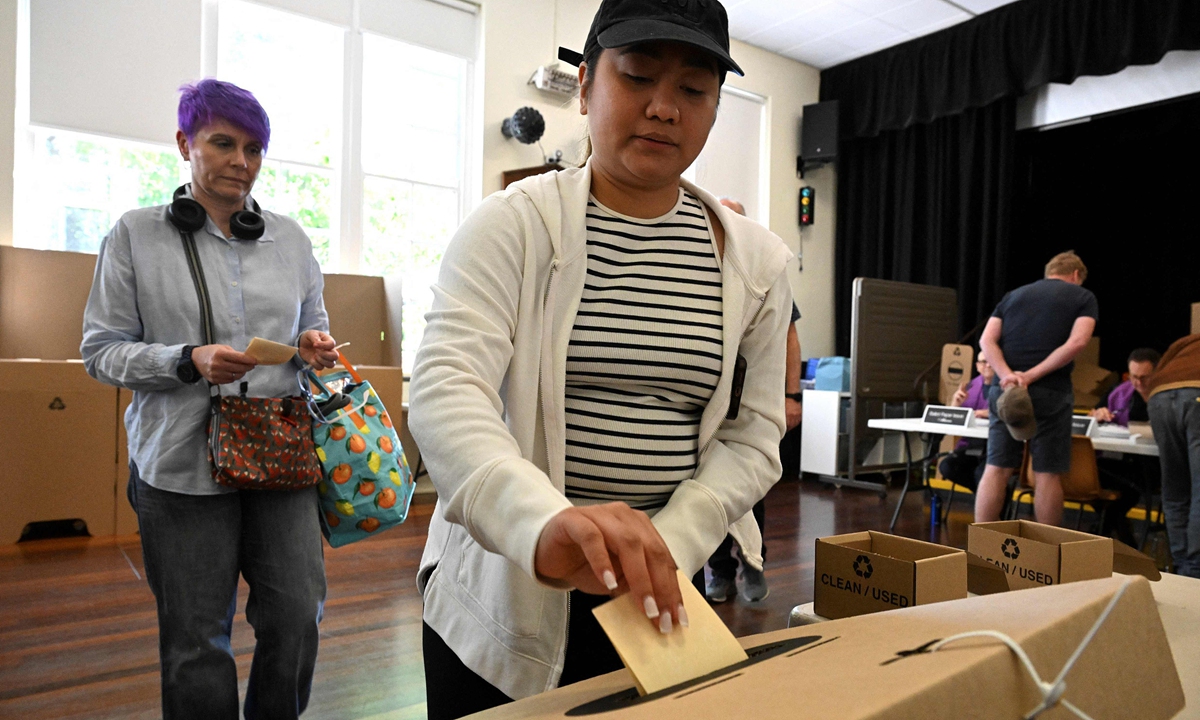
Photo:CFP
Last week, a referendum concerning the "First Nations" was defeated in Australia. There are many possible angles in analysing this failure, but I would like to analyse it in terms of Western-style structures of governance. More specifically, this is a question of Western-style colonial structures of governance, which systemically excludes minority nationalities from the political system. In other words, it is a question of structural injustice.
The referendum question: to include in the Australian Constitution a clause that would establish a parliamentary advisory body called "The Voice." Crucially, this advisory body was to be made up of Aboriginal and Torres Strait Islander peoples, or the "First Nations" of Australia.
If the referendum had been successful, the First Nations would - for the first time - have been included in the Constitution, and therefore included in the structures of governance. But the referendum was not successful; it was soundly defeated.
In order to analyse this problem, we need to consider history, colonial ideology and structural exclusion itself.
In terms of history, the First Nations of Australia have a history of 60,000 years, according to research. Australia's colonial history is no more than 235 years. Moreover, the "Commonwealth of Australia," as it is officially known, was established on January 1, 1901. This means that the state of Australia is only 122 years old - a mere fraction compared with 60,000 years.
However, when we study the Australian Constitution there is simply no acknowledgement of the presence or long history of First Nations. The preamble mentions the people of the various colonies who had come from overseas to colonise and settle in Australia. It also has much to say about the "queen." The reader may ask: which queen, Queen Victoria of the United Kingdom and Northern Ireland? Yes. The Constitution stipulates the monarch of another country is actually the head of state in Australia, who appoints a governor general answerable only to the monarch of the UK.
One may object that this is a constitutional monarchy, with limited powers. Actually, the monarch of the UK - and of Australia, Canada, New Zealand and other former colonies - retains considerable powers. These powers became apparent when Queen Elizabeth II - through the governor general - dismissed the Australian Labor Government led by Gough Whitlam in 1975. Furthermore, the Australian Constitution was not made by the people of Australia or a representative body in Australia. It was an act of the British Parliament, enacted on July 9, 1900, coming into force less than 6 months later - when the then queen was satisfied to do so.
In light of this history, it is difficult see whether there is anything "Australian" about this Constitution: it excludes First Nations, was not enacted by the Australian people, and the head of state is the monarch of another country. This constitution is clearly a colonial institution.
In terms of colonial ideology, the key was that there is clearly a distinction between "superior human beings" and "sub-humans," with the latter being seen as closer to animals. True, this distinction may have been dressed up as "civilisation" and "barbarism," but it is clearly an ideology that distinguished those that are the "chosen people" from those that are not "chosen," between a "master race" and an "inferior race." This ideology had disastrous effects in Australia: a brutal process of mass evictions from traditional lands, poisonings, deliberate spread of diseases, massacres, on-going wars of extermination - in short, an attempted genocide of the First Nations and a crime against humanity. The absence of the First Nations in the Constitution was merely a reflection on paper of the reality on the ground. As a child at school in Australia, I still remember the line being pushed in the 1960s: Aboriginal peoples would "die out," which I now know was a euphemism for what had happened in the century and a half before I was born.
The question of structural exclusion: it is simply impossible for Western-style structures of colonial governance to include minority peoples. What I have described concerning Australia is not an exception. While some of the details may differ, the underlying pattern is the same for other former colonies of the British Empire - the US, Canada, New Zealand, and so on - where colonizers have sought to obliterate Indigenous peoples. In this respect, they reflect the reality of Western European countries themselves. How different is the experience of socialist countries since 1917? From the founding of one socialist country after another, minority nationalities have been included within the structures of governance - but this is the subject of another article.
I would like to conclude with the question of justice and injustice. What we see with the Constitution and governance system in Australia is structural injustice. For the First Nations of Australia, this injustice includes economic, political, social and cultural aspects that persist today. This is a structural injustice that is enshrined in a colonial constitution that is extremely difficult to amend. It comes as no surprise that the referendum was soundly defeated.
The author is a Marxist scholar from Australia, distinguished overseas professor at Renmin University of China, and on editorial board of the Australian Marxist Review. opinion@globaltimes.com.cn
